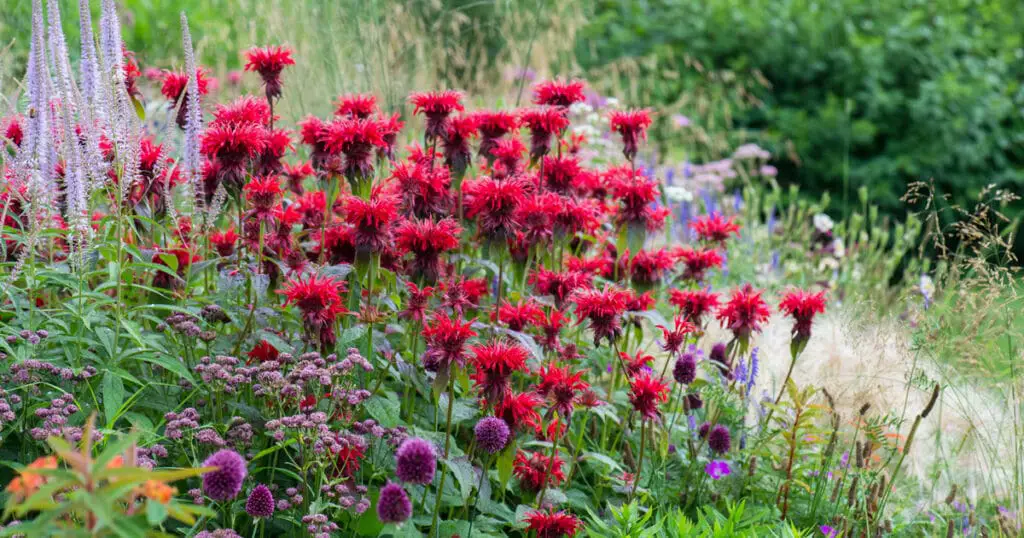If there are deer in the area and you have a garden, these animals will probably invade your property at some point. There’s nothing worse than planting a beautiful garden only to have it turned into a deer buffet! Luckily, there are many deer-resistant perennials that you can add to your property.
There are many deer-resistant plants in annual varieties as well as perennials. Here we’ll talk about perennial deer-resistant plants.
Why Are Some Plants Deer-Resistant?
Table of Contents
ToggleThere are several potential reasons a plant may be deer-resistant. They may be toxic to deer and the animals sense this.
Alternatively, they may just have a strong scent that deer dislike. In some cases, it is the taste of the plant that deer find repulsive.
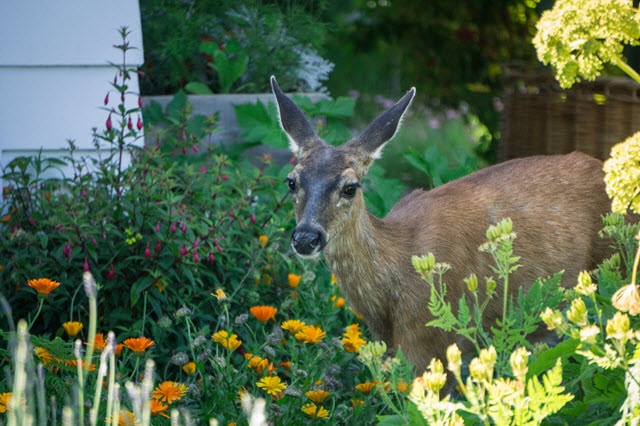
Deer don’t like plants that have very strong scents, even if they smell nice to humans. Herbs are a great example of plants that humans love but deer stay away from.
Plants with textured leaves are often deer-resistant, too. They’re hard for deer to digest.
For example, deer are unlikely to eat leaves with a velvety texture. They also avoid plants with prickly stems or leaves, which isn’t that surprising.
Full Sun Deer Resistant Perennials
Different plants grow best in different conditions, and “full sun” perennials are plants that prefer to receive 6 or more hours of sunlight per day.
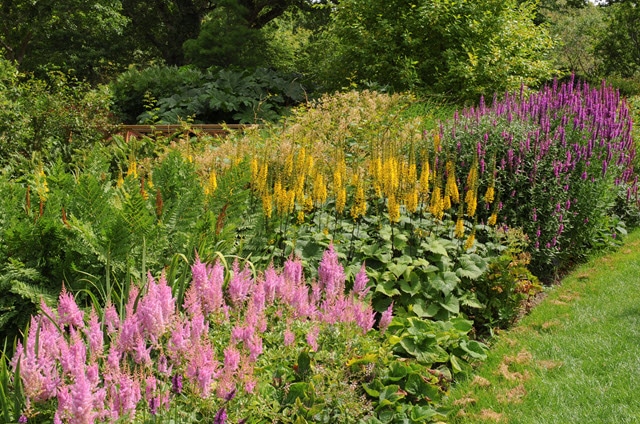
The full-sun deer resistant perennials we’ll talk about here are:
- Lavender
- Sage
- Oriental poppies
- Rose campions
- Irises
- Peonies
Let’s discuss these in detail below.
Lavender
Lavender is one of the most popular deer-resistant plants. It does well with lots of sun, and it can flourish in a variety of climates.
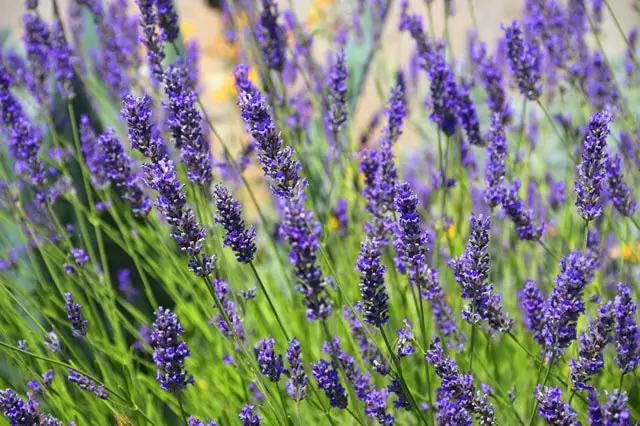
Adding the lovely scent of lavender to your garden will make it less appealing for deer. Cervids dislike this smell.
Sage
Sage is another well-known herb that is deer resistant. There are several different varieties of sage, and deer don’t seem to like any of them.
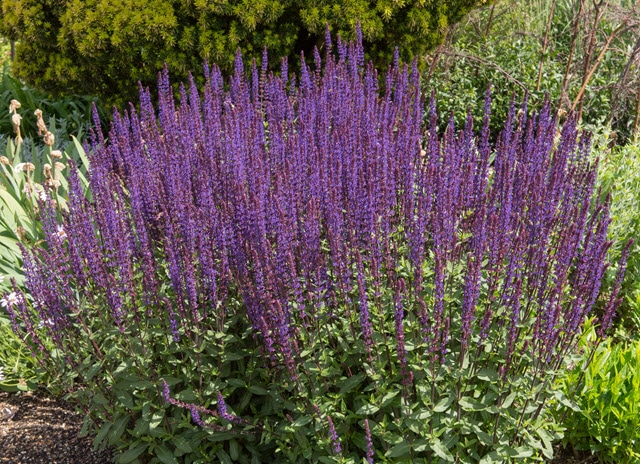
Always plant sage in well-drained soil. It’s crucial that the soil isn’t left too wet when you’re growing sage.
To add sage to your garden, simply plant a small existing sage plant. As well as helping keep away deer, growing sage will give you a supply of this herb for the kitchen.
Oriental Poppies
Oriental poppies are toxic to deer and these animals know that instinctively. When oriental poppies are in bloom during the summer, they have a beautiful color.
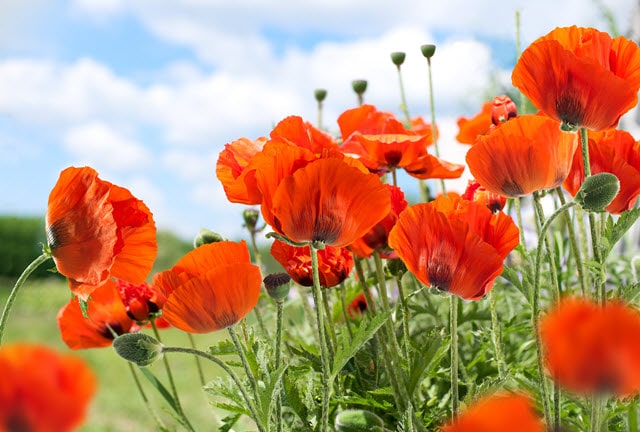
The Oriental Poppy is also poisonous for pets, so don’t have these in your garden if you have a dog, cat, or any other kind of animal. Depending on the variety you choose, your Oriental Poppies may be salmon pink, orange, or red.
Some are even bi-color. This plant can grow up to two feet in height and between two and four feet in width.
One great feature of Oriental Poppies is the large size of the flowers. These flowers do best with lots of sunlight and very fertile, well-drained soil.
Rose Campions
Rose campions are another beautiful flower that deer will avoid. This flower has silvery leaves, and deer are known to avoid them.
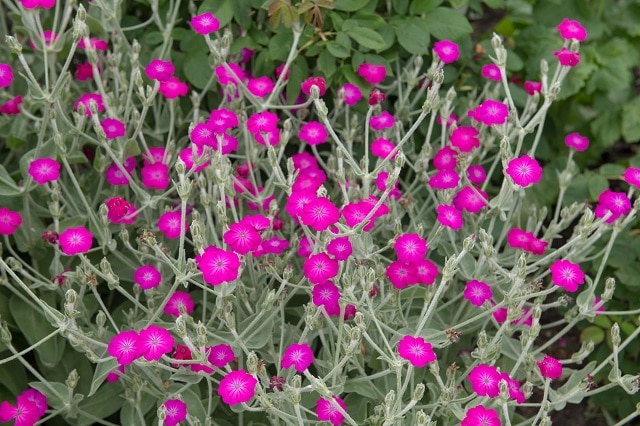
This plant grows delicate flowers that are an ideal finishing touch for many gardens. Get the color variety of rose campions that you prefer.
You can find pale pink, bright pink, and white. The flowers have an appealing trumpet shape.
One of the great features of rose campions is how it grows in soil with a variety of different pHs. Whether your soil is neutral, alkaline, or acidic, you can have success with rose campions.
Make sure the soil is well-drained, though.
Irises
Most types of iris are also deer resistant. The bearded iris is an example of a strong-scented flower that we find pleasing but that is too strong for deer.
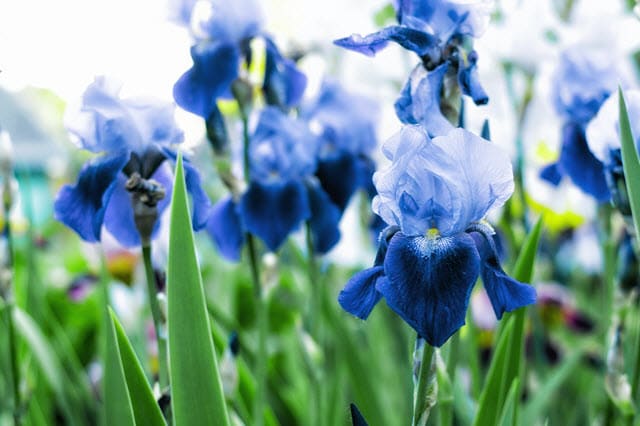
These flowers are excellent for bringing hummingbirds and butterflies onto your property. Of course, irises are also beautiful.
They can get quite tall, too. In fact, an iris plant may get to between two and three feet tall.
You can expect irises to bloom in the early part of summer. Make sure your irises have well-drained soil.
Peonies
Beautiful and cheerful, peonies are also deer-resistant. Peonies do well with lots of sunlight.
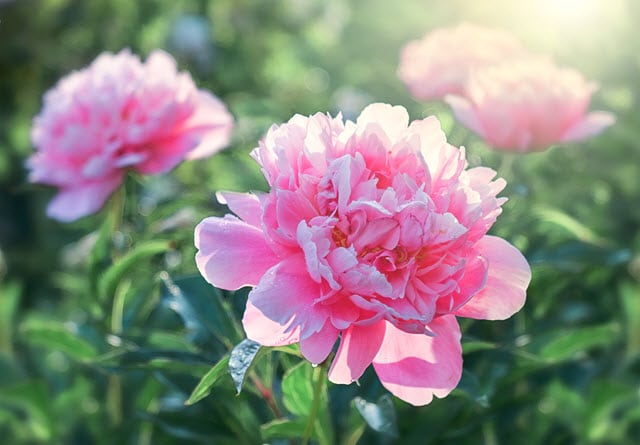
This flower blooms between late spring and early summer. For peonies to thrive, they need well-drained soil.
Even once the bloom is over, you’ll still appreciate the beautiful green leaves. These will take on a shade of gold or reddish-purple color in the fall months, though.
Partial Sun Deer Resistant Perennials
Some plants prefer a break from direct sunlight during the day, and for your part-shade garden beds (garden areas that receive 4-6 hours of direct sunlight per day), you’ll want to choose the right perennial to thrive in those light conditions.
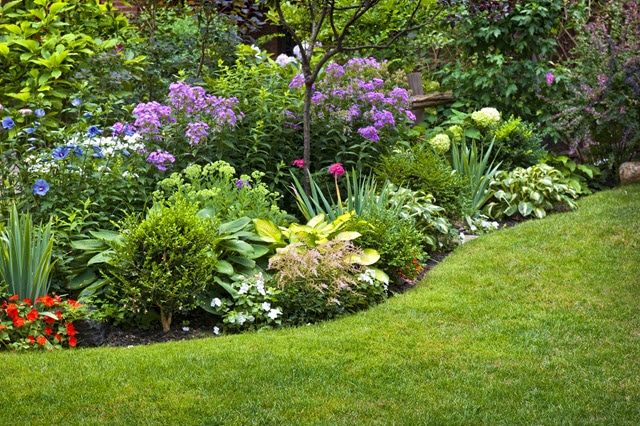
These deer-resistant plants do well in partial sun.
- Lamb’s ear
- Columbines
- Bleeding hearts
- Catnip
- Foxgloves
- Lenten roses
- Grecian windflowers
Let’s learn about these plants below.
Lamb’s Ear
Lamb’s ear is a perennial that does well in multiple conditions and is highly deer resistant. This plant is extremely resilient and can thrive in rock gardens and other difficult soils.
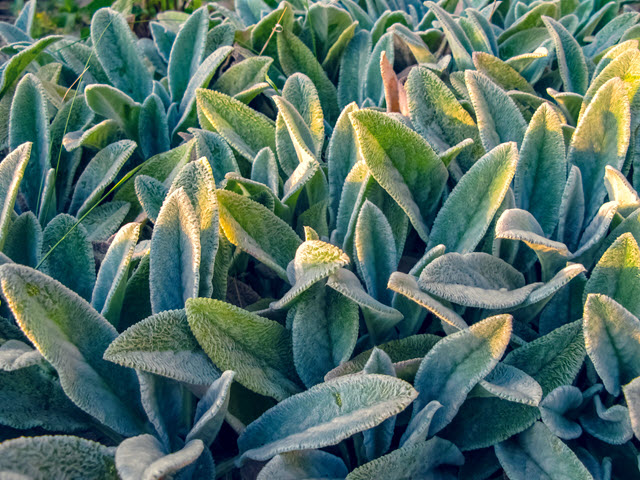
This plant can survive almost any sun or shade conditions, from full sun to partial sun and shade. It’s also a low-maintenance plant, making it a convenient addition if you don’t have much time for gardening.
Columbines
Columbines are yellow flowers that bloom in the springtime. There are also purple, orange, red, and white varieties of columbines available.
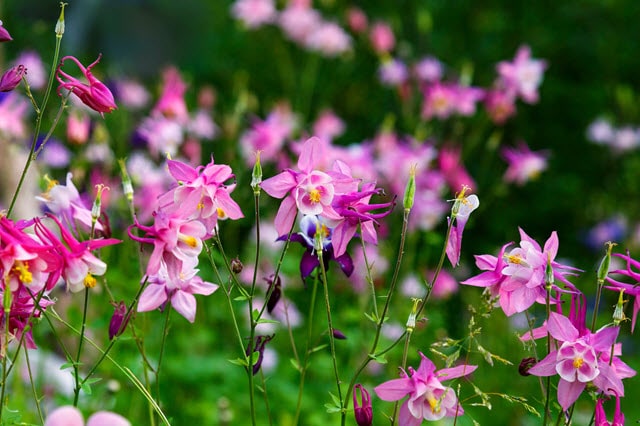
These flowers attract hummingbirds and butterflies. The columbine is a spring-blooming flower.
These flowers can stand up to drought and are deer-resistant. Columbines do best with partial sun.
Bleeding Hearts
Bleeding hearts are appropriately heart-shaped and available in different color varieties, including yellow, red, pink, and white.
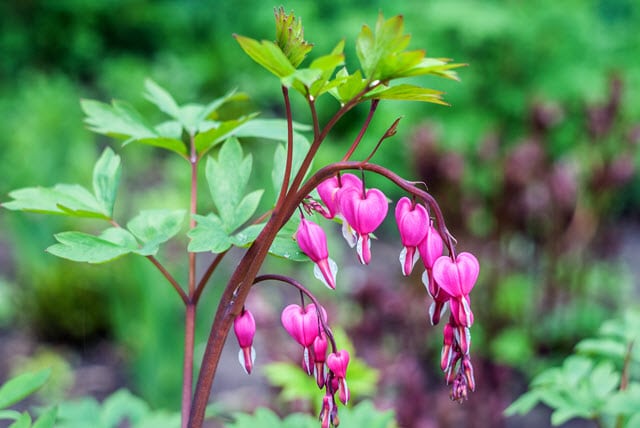
These deer-resistant flowers tend to bloom in clusters. They usually bloom early, and you should plant them in well-fertilized and well-draining soil.
Make sure the soil is well-aerated before you plant bleeding hearts.
Catnip
Catnip is a well-known subspecies of catmint. It’s deer-resistant, but cats love eating it.
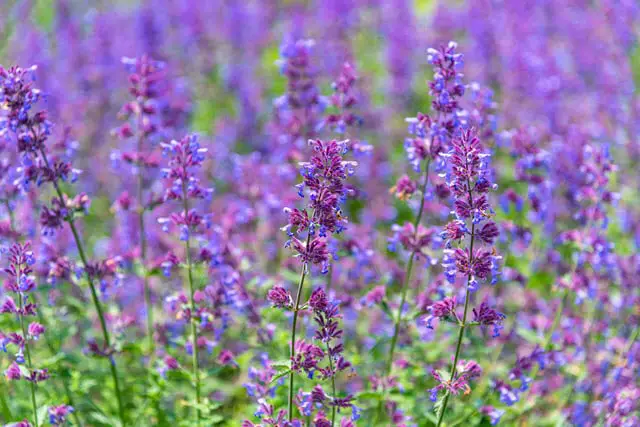
This is a perennial plant and it can grow quite tall, even up to three feet. Between May and September, white flowers appear and bloom.
If you have a cat, you know how much felines adore this plant. But deer dislike it and they won’t eat it.
Foxgloves
Foxgloves are other popular deer-resistant flowers. They’re actually poisonous for cervids, as well as for other animals and even people.
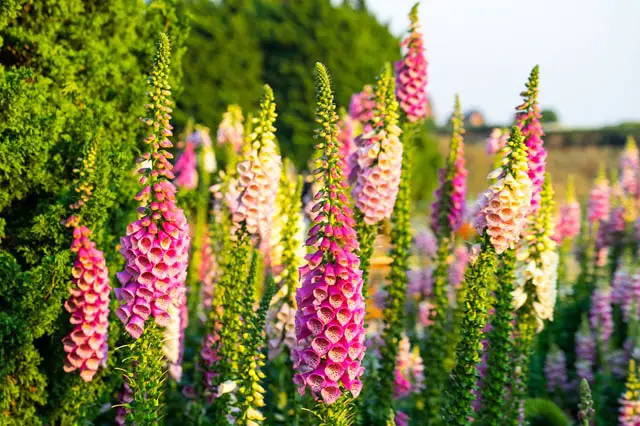
This plant grows beautiful bell-shaped flowers that do well with partial sun, but they will also thrive in areas with full sun. Foxgloves are available in different color varieties.
Lenten Roses
The Lenten rose is an early-blooming spring flower. This flower does well with partial shade and is known for its unique petal shapes.
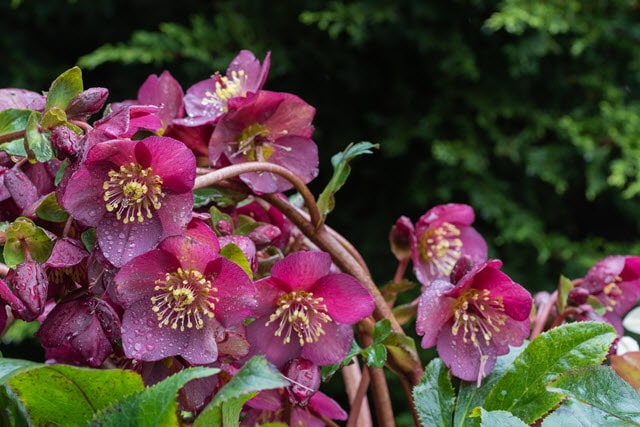
While Lenten roses have a relatively mild scent, deer dislike it. Also, this plant is toxic for deer, as well as other animals and humans.
Lenten roses aren’t actually part of the rose family. It only got that name because of its flower buds, which look a bit like tiny roses.
Grecian Windflowers
Grecian windflowers get their name because they look like they’re dancing when there is a breeze. They grow on long stems, and they bloom in May and Jane.
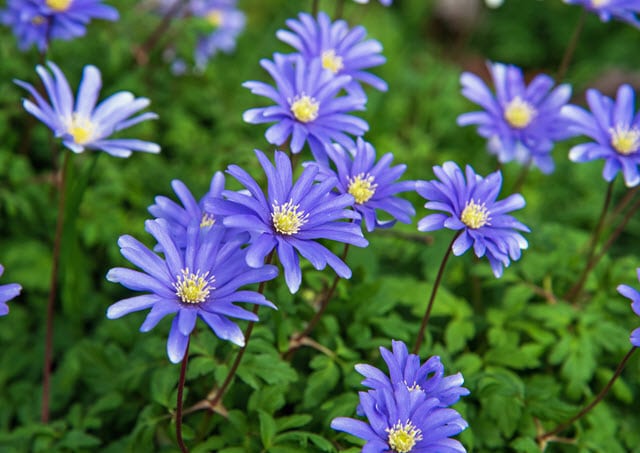
Sometimes people confuse windflowers for daisies. Deer won’t eat windflowers because of their strong fragrance.
You can find different color varieties of Grecian windflower, including purple, pink, light blue, and dark blue. Like many other flowers, these have yellow centers.
Grecian windflowers are quite easy to grow in that they can grow in a variety of soil pH levels, including neutral, alkaline, and acidic.
Deer Resistant Perennials for Shade
If your garden doesn’t get much sunlight, don’t worry. There are still plenty of deer-resistant perennials that will brighten up your garden without getting eaten by deer!
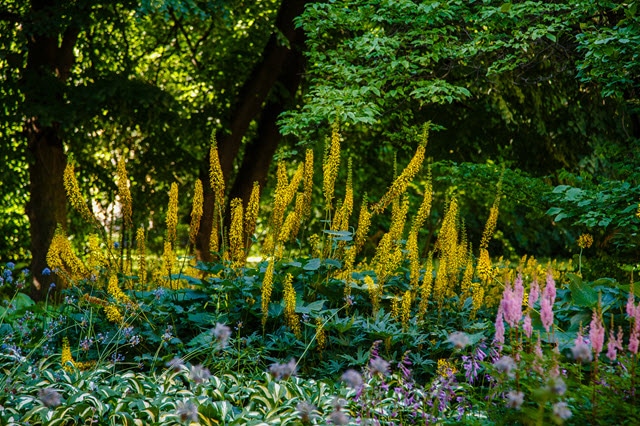
These deer resistant perennials thrive with 4 or fewer hours of sunlight per day.
- Lily of the valley
- Toad lilies
- Bergenias
- Ligularia
- Jack Frost brunnera
- Dutchman’s breeches
- Bottlebrush buckeyes
Let’s learn more about these shade-friendly plants below.
Lily of the Valley
Lily of the valley is perhaps the best-known shade plant that is resistant to deer. They are beautiful flowers that grow on bushes, meaning they are great for lining the borders of your garden.
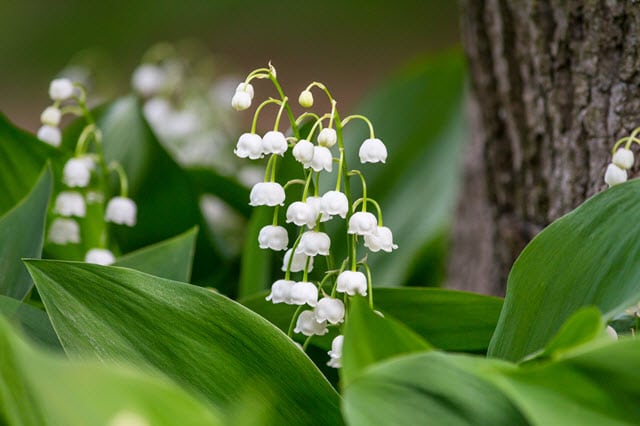
They do the best in shade, though there are a few varieties that will survive in partial shade. If you want a low-maintenance plant, lily of the valley is a good choice.
Lily of the valley helps keep away deer because it’s poisonous to those animals, as well as others (such as rabbits).
Toad Lilies
Toad lilies do well with a lot of shade. They feature unique color patterns and are sure to brighten up your garden.
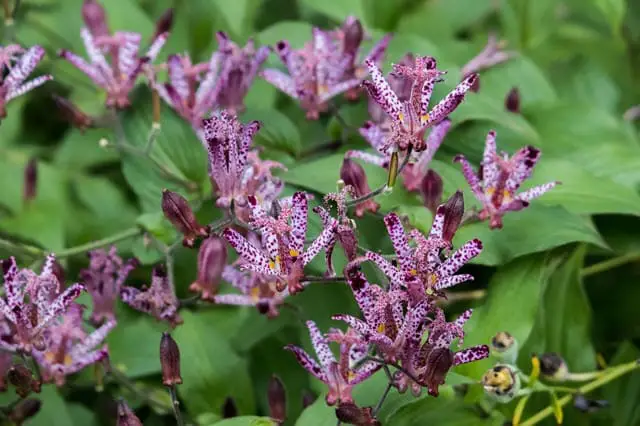
It is the strong scent of toad lilies that keeps away deer. This plant is an excellent choice if you want something with a more exotic appearance that is deer-resistant.
Its flowers are reminiscent of orchids, and they’re tiny and delicate. The toad lily’s foliage is impressive, too.
Toad lilies are able to deal with short droughts but only after they’re fully established and mature. When it comes to soil pH, this plant does best with something slightly acidic.
Bergenias
Bergenias are another deer-resistant plant and they’re perfect if you’d like to add a little pink to your garden. They’re popular for flowerbed borders.
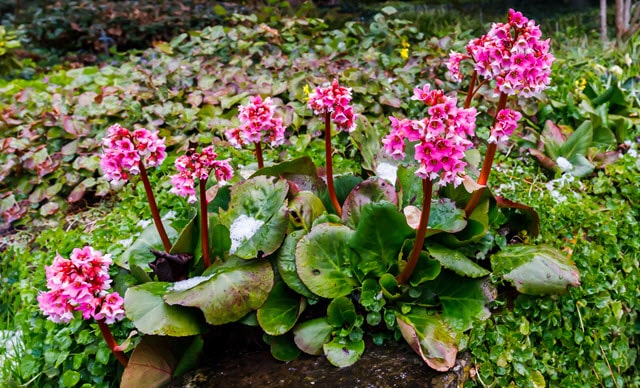
Bergenias are sometimes known as pigsqueak because their leaves make a squeaky noise when you rub them between your fingers.
This plant is generally grown as a perennial in temperature climates. You should plant it in neutral or slightly acidic soil.
These plants may reach one or two feet in height and width when mature.
Ligularia
Ligularia is another shade-loving plant that deer don’t like. There are many different Ligularia varieties, so if you want one with flowers, make sure it includes them.
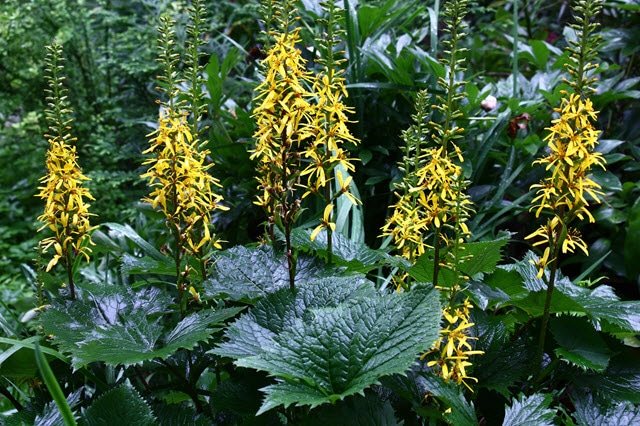
If your ligularia has flowers, they will be yellow. This is a well-known deer-resistant plant that needs plenty of moisture.
You won’t have to worry too much about your soil’s pH level, but you should make sure it’s nutritious and well-fertilized.
Jack Frost Brunnera
Jack Frost Brunnera is another leafy plant that is deer resistant. Its large silvery leaves are unappealing to deer. The plant takes its name from the frosty, silvery color of the leaves.
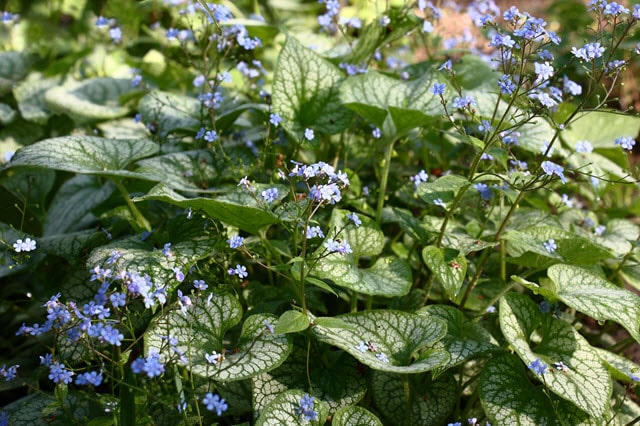
This plant’s light blue flowers bloom in the spring. The look of this plant and its flowers mean we often call it False Forget Me Not.
Make sure you give Jack Frost Brunnera soil that is moist but consistently well-drained. The soil should be either neutral or alkaline in pH.
Dutchman’s Breeches
Dutchman’s Breeches are unique deer-resistant plants. Its strange name comes from how the flowers look like pairs of upside-down pants.
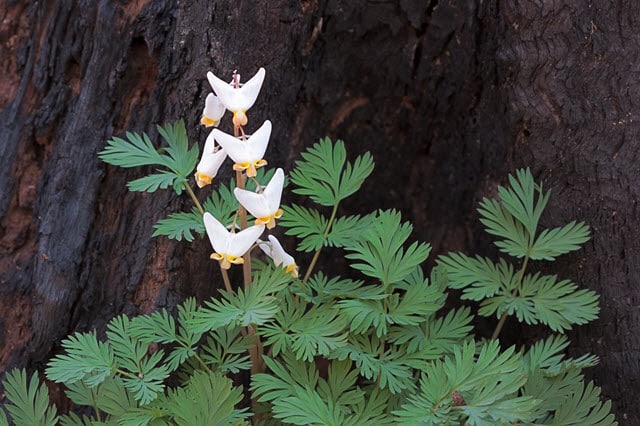
This plant might trick you into thinking it’s an annual because it’s an ephemeral. That means it only blooms for a short period of time, about two weeks, in the spring.
You shouldn’t put this plant in your garden if you have cats or dogs, as it’s toxic to these animals. It’s poisonous for us, as well.
Bottlebrush Buckeyes
Bottlebrush buckeyes are deer-resistant shrubs that do well in shade. They are known for attracting butterflies, so they are a great way to bring some life to your garden that isn’t going to eat it.
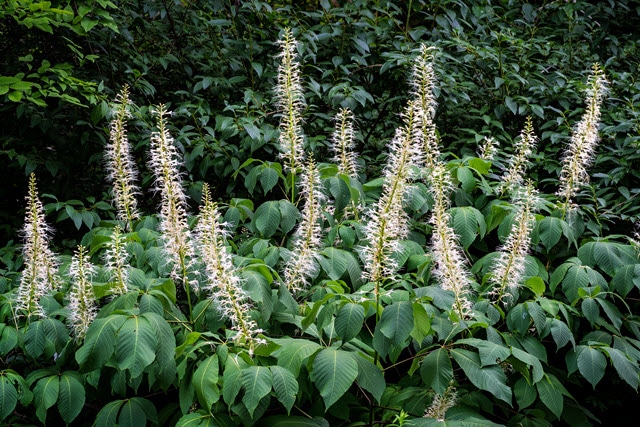
In the fall, this plant produces shiny nuts that look pretty but are inedible. If you’re going to plant bottlebrush buckeye on your property, make sure the soil is well-drained yet moist.
After your bottlebrush buckeyes are well-established in the soil, it will be resilient and able to deal with both overly wet and relatively dry conditions.
Final Thoughts: Deer Resistant Perennials
There are many different deer species in the world, and each deer’s diet vary depending on factors such as climate and season.
When there is a shortage of their preferred foods in the area, deer won’t hesitate to eat the flowers in your garden. To prevent this, plant deer-resistant perennials.
Deer won’t want to eat these plants, and their presence might keep them away from other flowers in your garden. Many homeowners plant them as borders to protect other elements of the garden.

